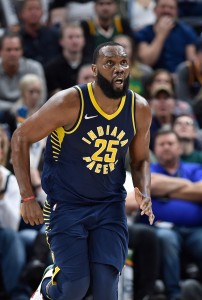We’re nearly two months into 2018’s NBA free agent period, and with news of contract agreements and signings still trickling in, Hoops Rumors is here to help you keep track of which players are heading to which teams this offseason. To this end, we present our Free Agent Tracker, a feature we’ve had each year since our inception in 2012. Using our tracker, you can quickly look up deals, sorting by team, position, free agent type, and a handful of other variables.
A few notes on the tracker:
- Some of the information you’ll find in the tracker will reflect tentative agreements, rather than finalized deals. As signings become official, we’ll continue to update and modify the data as needed.
- Similarly, contract years and dollars will sometimes be based on what’s been reported to date, so those amounts could be approximations rather than official figures. Salaries aren’t necessarily fully guaranteed either.
- A restricted free agent who signs an offer sheet won’t be included in the tracker right away. We’ll wait to hear whether the player’s original team will match or pass on that offer sheet before we update our tracker, in order to avoid confusion.
- If you’re viewing the tracker on our mobile site, be sure to turn your phone sideways to see more details.
Our 2018 Free Agent Tracker can be found anytime on the right sidebar of our desktop site under “Hoops Rumors Features,” and it’s also under the “Tools” menu atop the site. On our mobile site, it can be found in our menu under “Free Agent Lists.”
The tracker will be updated throughout the offseason, so be sure to check back for the latest info. If you have any corrections, please let us know right here.
Our lists of free agents by position/type and by team break down the players who have yet to reach contract agreements.

